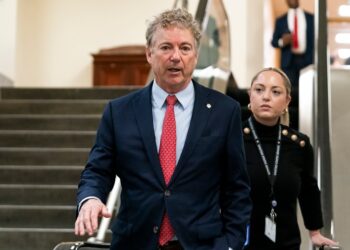The AFP News agency has put together a timeline of the main events since Russia invaded Ukraine three years ago on February 24, 2022.
Russian President Vladimir Putin announces a “special military operation” in Ukraine on February 24, 2022, saying he wants to “de-Nazify” the country.
Moscow launches its full-scale invasion with missile strikes on Ukrainian cities. The invasion sparks Europe’s worst refugee crisis since World War II.
The West imposes unprecedented sanctions on Russia. The European Union and United States send Ukraine weapons and aid.
Ukraine repels Russian forces advancing on the capital, Kyiv. Russia captures swathes of territory in the south and east.
In early April 2022, AFP witnesses the bodies of at least 20 civilians on a street in the Kyiv’s Bucha suburb.
It is the first in a string of macabre discoveries in towns abandoned by Russian forces which spark an international outcry and war crimes investigations. Moscow denies responsibility.
On May 21, 2022, Russia takes the southeastern port city of Mariupol, which has been relentlessly bombed, after the last Ukrainian troops holding out at a steelworks surrender.
In September 2022, Russia announces a “partial mobilisation” drive, forcibly drafting some 300,000 men to replenish the ranks of its army after weeks of setbacks.
On September 30, Putin annexes the Ukrainian regions of Lugansk, Donetsk, Kherson and Zaporizhzhia.
On June 24, 2023, Wagner chief Yevgeny Prigozhin leads a mutiny to bring down Moscow’s top military brass but retreats following mediation via Belarusian leader Alexander Lukashenko.
Prigozhin dies two months later in a mysterious plane crash.
- Ukrainian counteroffensive fails
Ukraine’s counter-offensive, launched in June 2023, fails. On February 17, 2024, Russian forces capture the eastern industrial town of Avdiivka after an onslaught which began in October.
In April 2024, Russia pounds energy facilities across Ukraine, in what Putin says is partly a response to Kyiv targeting Russia’s oil refineries
On April 23, Washington approves a long-delayed $61-billion aid package for Ukraine.
On May 10, 2024, Russian forces launch a surprise ground offensive in the Kharkiv region, capturing several villages. Ukraine sends reinforcements.
G7 leaders agree on June 13 in Italy on a new $50-billion loan for Ukraine using profits from frozen Russian assets.
On June 17, dozens of world leaders back Ukraine’s independence and territorial integrity at a summit in Switzerland.
On July 15, Ukrainian President Volodymyr Zelensky says that Russia, not invited to the first meeting, should be represented at a second summit.
As long-awaited US-made F-16 fighter jets start to arrive, Ukrainian forces launch a surprise incursion into Russia’s western Kursk region on August 6.
Kyiv says its army will create a buffer zone in the area and aims to persuade Russia into “fair” negotiations.
In late August and early September, Russia makes a string of deadly strikes on Ukrainian territory and makes new advances in the Donbass, in the east.
- North Korean reinforcements
In October 2024, Seoul, Kyiv and Washington say more than 10,000 North Korean troops have been deployed to support Russia’s army fighting in the Kursk region.
- Long-range missiles, escalation
On October 29, 2024, Ukraine announces plans to mobilise an extra 160,000 soldiers, faced with advancing Russian troops.
On the 1,000th day of the invasion, on November 19, Ukraine uses Western-supplied long-range missiles against Russian territory for the first time after obtaining US and British clearance.
Putin targets Ukraine with Russia’s new hypersonic missile, nicknamed Oreshnik, without a nuclear warhead.
Putin warns of the possibility of a world conflict and says Russia has all the options on the table.
Weeks before Donald Trump returns to the White House, Joe Biden ramps up announcements of military aid to Kyiv.
Russia claims new gains in eastern Ukraine and Moscow carries out several massive missile and drone attacks on Ukrainian energy infrastructure.
Shortly after Trump is sworn in as US president, he creates shock by saying he and Putin have agreed to start “immediate” talks on ending the Ukraine conflict, following a phone call on February 12.
Washington says Ukraine’s ambition to join NATO and to return to its pre-2014 borders, before the Russian annexation of Crimea, are unrealistic.
On February 16, the US president says he could meet Putin in Saudi Arabia ‘very soon’, adding that he believes his Russian counterpart genuinely wants to stop fighting in Ukraine.






